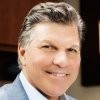Sustainable Shopping: What Consumers Really Want
Ads in Chatbots Are Inevitable, Says This Marketing Professor
Wings, Watch Parties, and Team-Themed Cocktails: Businesses Share Their Ultimate March Madness Game Plans
Sam Altman Says ChatGPT-4 'Kinda Sucks.' It's a Reminder of Why Entrepreneurs Innovate
How Costco's $1.50 Hot Dog Combo Serves Up a Lesson in Building Brand Loyalty
Going Remote Saved This PR Firm $90,000 a Year in Rent. So It Took the Team to Universal Studios
As Inflection AI's Leadership Shakeup Raises Questions, the Company Insists It's Equipped for the Future
When it comes to delivering extraordinary presentations, few could compete with Steve Jobs. "Steve was a natural," according to Bill Gates on a recent episode of the podcast Armchair Expert With Dax Shepard.
Since I wrote one of the most popular books on Steve Jobs's presentation style, my ears perked up when Gates called Jobs a "natural." I know that Jobs improved over time, because he practiced over and over.
Was Gates fooled into thinking Jobs was simply a naturally gifted public speaker? No. Gates knows better and immediately added, "Although Jobs would rehearse, and it was fun to watch him. Part of his genius was that when he would finally do it, he would make it look like he was just thinking it up right there."
Gates is right. Jobs put a lot of effort into making it look effortless.
The good news is that you can also achieve this effortless presentation style. Just follow the five-step rehearsal strategy that made the public speaking of Steve Jobs the gold standard for business presentations.
Jobs committed to rehearsing his famous keynote presentations and product launches weeks before the event.
Most entrepreneurs or business leaders I coach leave their practice sessions for the night before or the morning of their presentation. They're shocked when I give them their new practice schedule, which starts far earlier than they ever dreamed.
A rehearsal means just that -- rehearsing the presentation just as you would do it for real.
Jobs would take the stage with only a select few people in the room. One executive who witnessed a rehearsal told me he was surprised that Jobs climbed onstage, raised the volume of his voice, and delivered the presentation as if he were speaking to a packed auditorium.
It's harder to open your mouth and articulate your ideas than it is to silently read through the slides in your head. Practice your presentation out loud.
Jobs paid attention to every aspect of the performance: visuals, words, and body language. If he wasn't happy with the design of a slide or an explanation, he would improve it for the next rehearsal.
While you're rehearsing, note slides or words that need to be changed. Also, pay attention to your body language and delivery. Record yourself on video and watch it. You might catch annoying habits that you were not aware of. Also, look for moments where gestures might enhance the power of your ideas.
Jobs had a reputation for telling customers what they wanted before they asked for it. But when it came to rehearsing presentations, he encouraged collaboration.
After practicing part of a presentation, Jobs would walk off the stage and ask the people in the room what they thought of the demo, slides, or word choice. He wanted to hear from others, and so should you.
Don't schedule all your rehearsal sessions by yourself. Ask trusted friends or peers to watch. Ask them for feedback and incorporate some of their advice. After all, they're seeing your presentation like others will -- as outsiders.
Jobs cleared his calendar ahead of the actual event to schedule "dress rehearsals." He would show up in his uniform: jeans, black mock, running shoes. Jobs didn't always wear blue jeans and a mock turtleneck shirt to the office, but he did for public presentations.
Commit to dress rehearsals by scheduling the session on your calendar just as you would any important appointment. When you show up, be in "full dress." Wear the same type of clothes that you'll have on for the presentation. It will help you get into speaking mode, and you'll feel more comfortable when you take the stage for the real thing.
Few speakers are born "naturals." They work at it and, like Steve Jobs, rehearse effectively to make it look natural.
Now accepting applications for Inc.’s Best Workplace awards. Apply by February 16 for your chance to be featured!
A refreshed look at leadership from the desk of CEO and chief content officer Stephanie Mehta
Privacy Policy
How Steve Jobs Made Presentations Look Natural, According to Bill Gates
 6
6
 13
23.03.2024
13
23.03.2024
Sustainable Shopping: What Consumers Really Want
Ads in Chatbots Are Inevitable, Says This Marketing Professor
Wings, Watch Parties, and Team-Themed Cocktails: Businesses Share Their Ultimate March Madness Game Plans
Sam Altman Says ChatGPT-4 'Kinda Sucks.' It's a Reminder of Why Entrepreneurs Innovate
How Costco's $1.50 Hot Dog Combo Serves Up a Lesson in Building Brand Loyalty
Going Remote Saved This PR Firm $90,000 a Year in Rent. So It Took the Team to Universal Studios
As Inflection AI's Leadership Shakeup Raises Questions, the Company Insists It's Equipped for the Future
When it comes to delivering extraordinary presentations, few could compete with Steve Jobs. "Steve was a natural," according to Bill Gates on a recent episode of the podcast Armchair Expert With Dax Shepard.
Since I wrote one of the most popular books on Steve Jobs's presentation style, my ears perked up when Gates called Jobs a "natural." I know that Jobs improved over time, because he practiced over and over.
Was Gates........
© Inc.com
 visit website
visit website






















 Toi Staff
Toi Staff Gideon Levy
Gideon Levy Belen Fernandez
Belen Fernandez Andrew Mitrovica
Andrew Mitrovica Mort Laitner
Mort Laitner Rami G Khouri
Rami G Khouri Ali Fathollah-Nejad
Ali Fathollah-Nejad Nikkei Editorial
Nikkei Editorial
